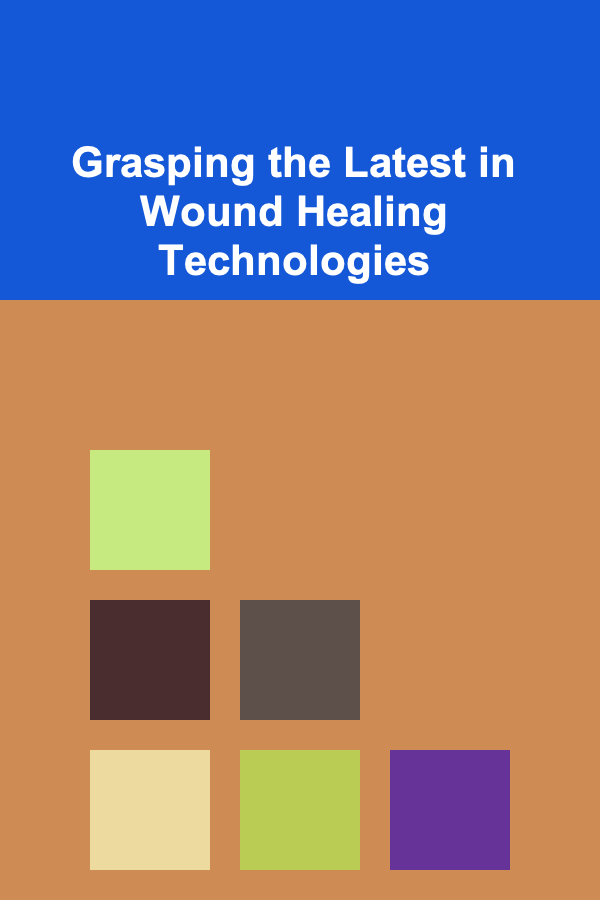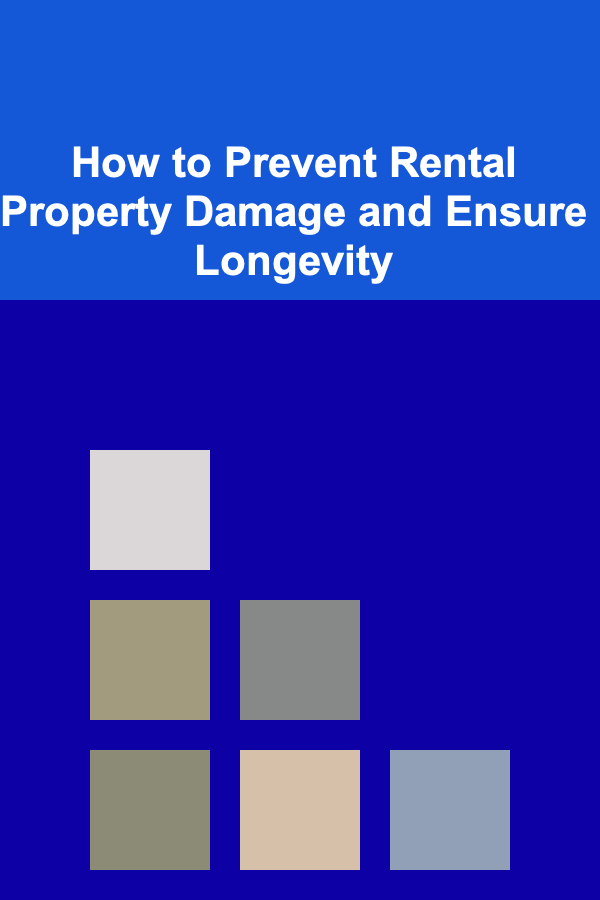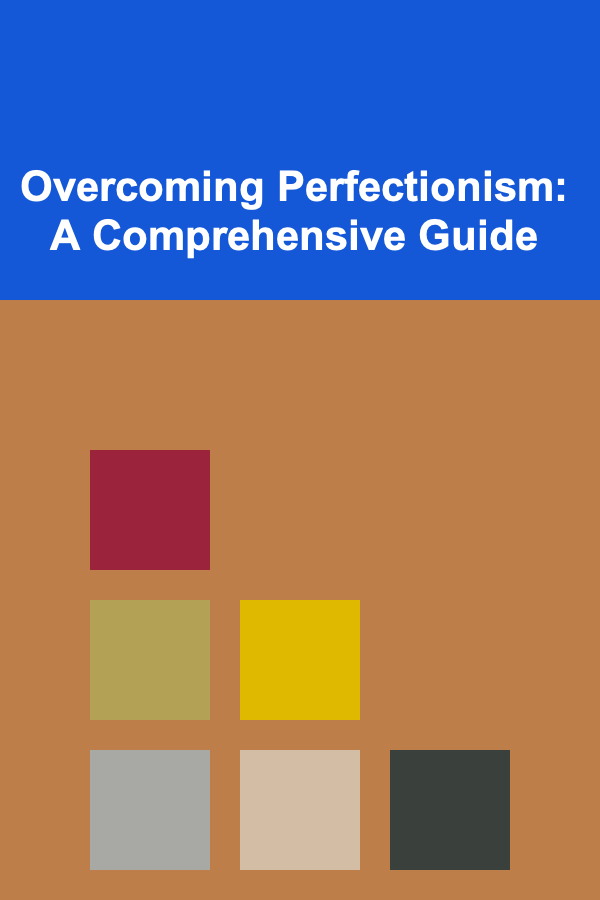
Grasping the Latest in Wound Healing Technologies
ebook include PDF & Audio bundle (Micro Guide)
$12.99$5.99
Limited Time Offer! Order within the next:

Wound healing is a complex biological process that is fundamental to human health. From minor cuts and abrasions to chronic ulcers associated with diabetes or vascular disease, the effective management and treatment of wounds is a significant challenge. Advances in wound healing technologies are constantly evolving, driven by a deeper understanding of the underlying mechanisms and the need for more effective and personalized therapeutic approaches. Staying abreast of these advancements is crucial for healthcare professionals, researchers, and even patients seeking optimal care. This article delves into the cutting edge of wound healing, exploring key areas of innovation and providing a roadmap for navigating the rapidly changing landscape.
Understanding the Wound Healing Process: A Foundation for Innovation
Before diving into the latest technologies, it's crucial to understand the fundamental phases of wound healing. A normal wound healing process proceeds through four distinct, albeit overlapping, stages:
- Hemostasis: This is the immediate response to injury, involving vasoconstriction and platelet aggregation to stop bleeding. A blood clot forms, acting as a temporary matrix.
- Inflammation: Inflammatory cells, such as neutrophils and macrophages, are recruited to the wound site to clear debris, bacteria, and damaged tissue. This phase is crucial for preventing infection and preparing the wound bed for repair. While essential, prolonged or excessive inflammation can impair healing.
- Proliferation: This phase involves the formation of new tissue. Fibroblasts migrate into the wound and synthesize collagen, forming granulation tissue. Angiogenesis, the formation of new blood vessels, provides oxygen and nutrients to the healing tissue. Epithelial cells migrate from the wound edges to cover the wound surface, a process called epithelialization.
- Remodeling: The final phase involves the reorganization of collagen fibers, increasing the tensile strength of the scar tissue. This phase can last for months or even years, and the resulting scar will never be as strong as the original tissue.
Each of these phases is tightly regulated by a complex interplay of growth factors, cytokines, enzymes, and extracellular matrix components. Disruptions in any of these phases can lead to impaired wound healing and the development of chronic wounds. Understanding these mechanisms is crucial for developing targeted therapies.
Advanced Wound Dressings: Beyond Basic Bandages
Wound dressings play a critical role in creating an optimal environment for healing. Traditional dressings, such as gauze, primarily provide protection and absorb exudate. However, advanced wound dressings offer a range of features designed to actively promote healing.
Types of Advanced Wound Dressings:
- Hydrocolloids: These dressings contain gel-forming agents that interact with wound exudate to form a moist gel. They are useful for wounds with light to moderate drainage and can promote autolytic debridement (the body's natural process of removing dead tissue).
- Hydrogels: These dressings are highly absorbent and hydrating, making them suitable for dry wounds or those with minimal drainage. They can also help to soothe and cool the wound.
- Foam Dressings: These dressings are highly absorbent and conformable, making them suitable for wounds with moderate to heavy drainage. They can also provide cushioning and protection to the wound.
- Alginates: Derived from seaweed, these dressings are highly absorbent and form a gel when they come into contact with wound exudate. They are useful for wounds with heavy drainage and can promote hemostasis (stopping bleeding).
- Film Dressings: These transparent, thin dressings provide a barrier against bacteria and allow for visualization of the wound. They are suitable for superficial wounds with minimal drainage.
- Antimicrobial Dressings: These dressings contain antimicrobial agents, such as silver, iodine, or polyhexamethylene biguanide (PHMB), to prevent or treat infection. They are useful for wounds that are at risk of infection or that show signs of infection.
- Silver-containing dressings: Silver ions are released, disrupting bacterial cell walls and inhibiting growth. Important to use judiciously to avoid potential silver resistance.
- Iodine-containing dressings: Provide broad-spectrum antimicrobial activity. Contraindicated in patients with iodine sensitivity.
- PHMB-containing dressings: Effective against a wide range of bacteria, fungi, and viruses. Generally well-tolerated.
- Collagen Dressings: These dressings contain collagen, a structural protein that is essential for wound healing. They can help to stimulate collagen synthesis and promote tissue regeneration.
- Superabsorbent Dressings: Designed to handle extremely high levels of exudate, preventing maceration (softening and breakdown of skin due to prolonged exposure to moisture).
Emerging Trends in Advanced Wound Dressings:
- Bioactive Dressings: These dressings incorporate biologically active molecules, such as growth factors, cytokines, or extracellular matrix components, to actively promote healing.
- Smart Dressings: These dressings are equipped with sensors that can monitor wound parameters, such as temperature, pH, and moisture levels, and transmit this information wirelessly to healthcare providers. This allows for remote monitoring and personalized wound care.
- 3D-Printed Dressings: Customized dressings can be 3D-printed to fit the exact size and shape of the wound. This allows for better wound coverage and reduced waste. Furthermore, these dressings can be loaded with therapeutic agents.
- Nanomaterial-based Dressings: Nanomaterials, such as nanoparticles and nanofibers, can be incorporated into dressings to enhance their antimicrobial, antioxidant, and wound-healing properties.
The selection of an appropriate wound dressing depends on various factors, including the type of wound, the amount of exudate, the presence of infection, and the patient's overall health. Healthcare professionals should carefully assess the wound and choose a dressing that will provide optimal healing conditions.
Negative Pressure Wound Therapy (NPWT): Vacuum-Assisted Closure
Negative pressure wound therapy (NPWT), also known as vacuum-assisted closure (VAC) therapy, is a technique that uses a vacuum dressing to promote wound healing. A foam dressing is placed in the wound, and a vacuum pump is used to apply negative pressure to the wound bed. This technique has several benefits:
- Removes excess fluid and debris: NPWT helps to remove excess fluid and debris from the wound bed, reducing edema and promoting granulation tissue formation.
- Stimulates angiogenesis: The negative pressure stimulates the formation of new blood vessels, improving blood supply to the wound.
- Reduces wound size: NPWT helps to draw the wound edges together, reducing wound size and promoting wound closure.
- Increases granulation tissue formation: The negative pressure stimulates the proliferation of fibroblasts and the synthesis of collagen, leading to increased granulation tissue formation.
NPWT is used to treat a variety of wounds, including:
- Chronic ulcers (diabetic ulcers, pressure ulcers, venous leg ulcers)
- Surgical wounds
- Traumatic wounds
- Burns
Recent advancements in NPWT include:
- Portable NPWT devices: These devices allow patients to ambulate more freely during treatment.
- NPWT with instillation: This technique involves irrigating the wound with a solution, such as saline or an antimicrobial agent, before applying negative pressure. This can help to remove debris and bacteria and promote healing.
- NPWT for closed incisions: Applying NPWT to closed surgical incisions can help to reduce the risk of surgical site infections and improve wound healing.
Growth Factors and Cytokines: Harnessing the Power of the Body's Own Healing Signals
Growth factors and cytokines are signaling molecules that play a critical role in regulating the wound healing process. These molecules stimulate cell proliferation, migration, and differentiation, as well as angiogenesis and extracellular matrix synthesis. The use of growth factors and cytokines to promote wound healing has been a major area of research and development.
Examples of Growth Factors and Cytokines Used in Wound Healing:
- Platelet-Derived Growth Factor (PDGF): Stimulates fibroblast proliferation and collagen synthesis. Becaplermin (Regranex) is a recombinant human PDGF-BB that is approved for the treatment of diabetic foot ulcers.
- Epidermal Growth Factor (EGF): Stimulates epithelial cell proliferation and migration.
- Transforming Growth Factor-beta (TGF-β): Stimulates collagen synthesis and extracellular matrix deposition.
- Vascular Endothelial Growth Factor (VEGF): Stimulates angiogenesis.
- Granulocyte-Macrophage Colony-Stimulating Factor (GM-CSF): Stimulates the proliferation and activation of macrophages and neutrophils.
Challenges and Future Directions:
While growth factors and cytokines have shown promise in promoting wound healing, several challenges remain:
- Delivery: Effective delivery of growth factors and cytokines to the wound site is crucial. Localized delivery methods, such as topical application, injection, or incorporation into wound dressings, are often preferred.
- Stability: Growth factors and cytokines are often unstable and can be easily degraded. Formulation strategies are needed to improve their stability.
- Cost: Growth factors and cytokines can be expensive to produce. Efforts are needed to reduce the cost of these therapies.
- Combination Therapies: The most effective approach may involve combining multiple growth factors or cytokines, or combining growth factors with other wound healing therapies. Research is ongoing to identify optimal combinations.
Cellular and Tissue-Based Therapies: Regenerating Damaged Tissue
Cellular and tissue-based therapies involve the use of living cells or tissues to promote wound healing and tissue regeneration. These therapies offer the potential to repair or replace damaged tissue and restore function.
Types of Cellular and Tissue-Based Therapies:
- Skin Grafts: A skin graft is a piece of skin that is transplanted from one area of the body (the donor site) to another area (the recipient site). Skin grafts are used to cover large wounds, such as burns or surgical wounds.
- Skin Substitutes: Skin substitutes are artificial skin products that can be used to cover wounds. They can be made from a variety of materials, including collagen, hyaluronic acid, and synthetic polymers. Some skin substitutes contain living cells, such as fibroblasts or keratinocytes.
- Acellular Dermal Matrix (ADM): Derived from human or animal skin, ADM is processed to remove cells, leaving behind a scaffold of collagen and other extracellular matrix components. It can be used to reconstruct soft tissue defects and promote wound healing.
- Living Skin Equivalents (LSEs): Contain living cells (fibroblasts and/or keratinocytes) that can secrete growth factors and promote tissue regeneration.
- Cell Therapy: Cell therapy involves the use of cells, such as stem cells, to promote wound healing. Stem cells have the ability to differentiate into different cell types and can promote tissue regeneration.
- Mesenchymal Stem Cells (MSCs): MSCs are multipotent stem cells that can differentiate into a variety of cell types, including fibroblasts, chondrocytes, and osteoblasts. They can be isolated from bone marrow, adipose tissue, and other tissues.
- Adipose-Derived Stem Cells (ADSCs): ADSCs are MSCs that are isolated from adipose tissue. They are relatively easy to obtain and have shown promise in promoting wound healing.
- Platelet-Rich Plasma (PRP): PRP is a concentrated solution of platelets that contains a high concentration of growth factors. PRP is prepared from the patient's own blood and is injected into the wound to promote healing.
Challenges and Future Directions:
Cellular and tissue-based therapies have the potential to revolutionize wound care. However, several challenges remain:
- Cost: Cellular and tissue-based therapies can be expensive to produce.
- Regulatory Hurdles: The regulatory pathways for cellular and tissue-based therapies are complex and evolving.
- Scalability: Scaling up the production of cells and tissues for therapeutic use can be challenging.
- Immunogenicity: The risk of immune rejection must be considered when using allogeneic (donor) cells or tissues.
- Long-Term Outcomes: More research is needed to evaluate the long-term safety and efficacy of cellular and tissue-based therapies.
Advanced Technologies: Light, Energy, and Sound
Beyond dressings and biological therapies, advanced technologies are emerging that harness the power of light, energy, and sound to stimulate wound healing.
Light Therapy:
- Low-Level Laser Therapy (LLLT): LLLT, also known as photobiomodulation, uses low-power lasers or light-emitting diodes (LEDs) to stimulate cellular activity and promote wound healing. LLLT is thought to work by increasing ATP production, reducing inflammation, and stimulating collagen synthesis.
- Ultraviolet (UV) Light Therapy: UV light can be used to kill bacteria and promote wound healing. However, UV light can also damage DNA and increase the risk of skin cancer, so it must be used with caution.
Energy-Based Therapies:
- Electrical Stimulation: Electrical stimulation can be used to stimulate cell proliferation, migration, and differentiation, as well as angiogenesis and collagen synthesis. Electrical stimulation is thought to work by modulating the endogenous electrical fields in the wound and by increasing the production of growth factors.
- Hyperbaric Oxygen Therapy (HBOT): HBOT involves breathing pure oxygen in a pressurized chamber. This increases the amount of oxygen in the blood and tissues, which can promote wound healing. HBOT is particularly useful for treating wounds that are poorly oxygenated, such as diabetic foot ulcers.
- Ultrasound Therapy: Ultrasound therapy uses sound waves to stimulate cellular activity and promote wound healing. Ultrasound can be used to increase blood flow, reduce inflammation, and stimulate collagen synthesis.
Emerging Technologies:
- Plasma Technology: Cold atmospheric plasma (CAP) is an ionized gas that can be used to kill bacteria, stimulate cell proliferation, and promote wound healing. CAP is a promising new technology for treating chronic wounds.
- Acoustic Wave Therapy: Uses sound waves to stimulate tissue regeneration and reduce pain. Shows promise in treating chronic wounds and scar tissue.
The Role of Nutrition and Patient Management
While advanced technologies are crucial, the importance of good nutrition and comprehensive patient management should not be overlooked. Nutritional deficiencies can impair wound healing, and underlying medical conditions, such as diabetes and vascular disease, can contribute to chronic wounds.
Key Considerations:
- Adequate Protein Intake: Protein is essential for tissue repair and regeneration. Patients with wounds should consume adequate protein to support healing.
- Vitamins and Minerals: Vitamins A, C, and E, as well as zinc and iron, are important for wound healing. Supplementation may be necessary in patients with deficiencies.
- Glycemic Control: Maintaining good glycemic control is essential for patients with diabetes. High blood sugar levels can impair wound healing.
- Compression Therapy: Compression therapy is used to improve venous circulation and reduce edema in patients with venous leg ulcers.
- Offloading: Offloading pressure from the wound site is essential for patients with pressure ulcers and diabetic foot ulcers.
- Smoking Cessation: Smoking impairs wound healing by reducing blood flow and oxygen delivery to the tissues.
- Pain Management: Effective pain management is important for improving patient comfort and compliance with treatment.
Navigating the Information Landscape: Staying Current
The field of wound healing is constantly evolving. Staying up-to-date on the latest advancements requires a proactive approach. Here are some strategies for navigating the information landscape:
- Attend Conferences and Workshops: Conferences and workshops provide opportunities to learn from experts in the field and to network with other professionals.
- Read Peer-Reviewed Journals: Peer-reviewed journals publish the latest research findings on wound healing. Examples of relevant journals include the Wound Repair and Regeneration, the Journal of Wound Care, and the International Wound Journal.
- Join Professional Organizations: Professional organizations, such as the Wound Healing Society and the European Wound Management Association, provide resources and opportunities for professional development.
- Utilize Online Resources: There are many online resources available, including websites, databases, and social media groups, that provide information on wound healing. However, it is important to evaluate the credibility of these resources carefully.
- Engage in Continuing Education: Continuing education courses and programs can help healthcare professionals stay up-to-date on the latest advancements in wound healing.
- Collaborate with Experts: Consulting with wound care specialists can provide valuable insights and guidance.
- Critically Evaluate Marketing Claims: Be wary of exaggerated claims about new products or technologies. Look for evidence-based support.
- Participate in Clinical Trials: Consider participating in or referring patients to clinical trials to contribute to the advancement of wound healing knowledge.
Conclusion
Wound healing is a dynamic and rapidly evolving field. Advances in wound dressings, NPWT, growth factors, cellular therapies, and advanced technologies are offering new hope for patients with chronic wounds. By understanding the fundamental principles of wound healing, staying abreast of the latest advancements, and utilizing a multidisciplinary approach, healthcare professionals can improve outcomes and enhance the quality of life for patients with wounds. The key to grasping the latest in wound healing technologies lies in a continuous commitment to learning, critical evaluation of new information, and a focus on evidence-based practice. Furthermore, the patient-centered approach, with careful assessment and individualization of treatment plans, is paramount for achieving successful wound management.

How to Decorate a Small Apartment Without Overwhelming the Space
Read More
How to Prevent Rental Property Damage and Ensure Longevity
Read More
How to Use Storage Ottomans for Dual Purpose Organization
Read More
Overcoming Perfectionism: A Comprehensive Guide
Read More
Fall Cleaning Checklist for Pet Owners
Read More
10 To-Do List Items to Prepare for Technical Interviews
Read MoreOther Products

How to Decorate a Small Apartment Without Overwhelming the Space
Read More
How to Prevent Rental Property Damage and Ensure Longevity
Read More
How to Use Storage Ottomans for Dual Purpose Organization
Read More
Overcoming Perfectionism: A Comprehensive Guide
Read More
Fall Cleaning Checklist for Pet Owners
Read More